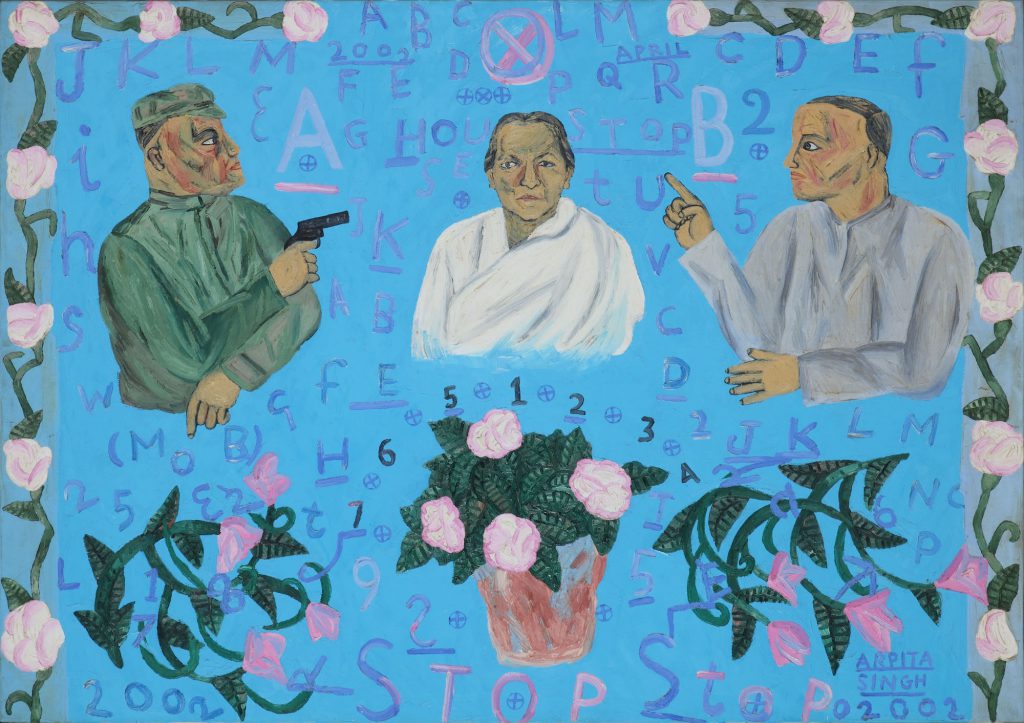
Arpita Singh, Perhaps My Mother, 1995, oil on canvas, 121.9 x 182.9 cm, courtesy of Nitin Bhayana, New Delhi
Arpita Singh, Perhaps My Mother, 1995, oil on canvas, 121.9 x 182.9 cm, courtesy of Nitin Bhayana, New Delhi

In conversation at her studio in New Delhi, Arpita Singh reminded the curator, “Shamans, in fact, have been the first chemists.” The suite of watercolor drawings and paintings on view, made from the 1970s to the early 2000s, creates a passage through Singh’s microcosms and addresses the subversive tones of ritual structures, mythology as a mode of bearing witness to collective reality, ironic interpretations of political cruelty, and subjective truths. Her myriad fabulations are grounded in psychic states and spin narratives from the directness of bodily testimony sensing vulnerability, strength, and despair.
The textile arts, as art historian and curator Deepak Ananth has observed, “claimed Singh’s attention, specifically the traditional kantha embroidery practiced by women in the rural areas of her native Bengal.” Soon after graduating from the Delhi College of Art, she worked as an artistic consultant for the Weaver’s Service Centre, a state-funded cooperative. In her oeuvre, familial and mythological protagonists are interchangeable and often hover over the scene or lie in a dreamlike state. Singh rejects the rules of perspective and scale to conceive a scenography in which discordant temporal journeys are shown in dense simultaneity. Alluding to India’s painted manuscript traditions, Singh relays a circulation of happenings as evoked in legends and recursive refrains of popular and sacred verse with inventive energy. Figures Around the Table (1993), Suitors in Disguise (2000), and The Western Sky: July July (1996) mark Singh’s intimate engagement with female sexuality, the cycle of motherhood, and womanliness in moods of wildness and refusal and as a force of brave future-building.
Time codes, numerals, and letter arrangements in English and Devanagari frequently stream into the background of Singh’s paintings, as in Perhaps My Mother (1995) and Feminine Fable (1994), and indicate the way she threads visual storytelling, folklore, and news headlines as conflated literary sources integral to an artist’s toolkit. With her artist husband Paramjit Singh, she experienced the anti-Sikh pogrom of 1984 in Delhi and the social turmoil and censorship during the years of Emergency (1975–77) under the regime of Indira Gandhi. Chronicles from these historical experiences enter Singh’s painting as Surrealist figurations with a jagged and menacing charge: powers play among men in uniform, with weaponry, floral motifs, and avian characters provoke the convulsion of nightmares.
Arpita Singh, Perhaps My Mother, 1995, oil on canvas, 121.9 x 182.9 cm, courtesy of Nitin Bhayana, New Delhi